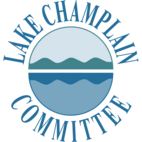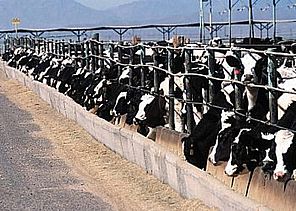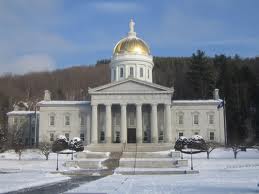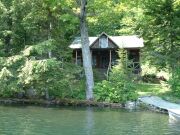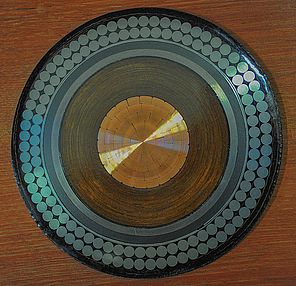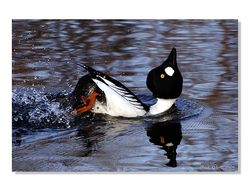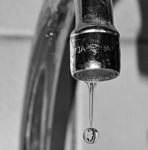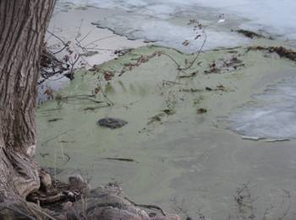New York Sacrificing Water Quality for Yogurt
The New York DEC is considering changes to its large farm rule (CAFO – concentrated animal feeding operation) so that it no longer applies to farms with between 200 and 299 cows. With the proposed changes, farms of this size would no longer be required to develop plans that ensure they aren’t spreading too much manure and fertilizer on fields that don’t need it and would no longer be required to take certain steps that prevent runoff from farms. The proposed rule change would apply to approximately 13 farms in the Champlain Valley, most in Clinton County.
DEC has admitted in its filing that the proposed rule change will “result in impacts to fish and aquatic life,” and that there is “potential for adverse impacts to ground or surface waters as a result of this action.” The change would sacrifice water quality to encourage greater milk production. Read more about NY DEC's proposed changes.
Blue Waters Coalition Presses for Water Investments
LCC is part of a 32-member coalition of environmental groups, angler associations, and businesses who have signed a resolution urging public officials and elected leaders to make greater investments in protecting and restoring our waterways and water infrastructure.
Speaking at the coalition press conference on opening day of the 2013 Vermont Legislative session, LCC Executive Director Lori Fisher stated: Read more on LCC's website.
Vermont DEC Estimates Water Clean-up Costs; Calls for Improved Shoreline Management
The Vermont DEC has released the final version of a report on funding needs for clean water in Vermont. The legislature requested the report in Act 138 of the 2012 session. DEC estimates it will cost $156 million per year in order to achieve the state’s clean water goals.
The report is organized into three chapters. The first describes the municipal and state wide challenges in 19 categories of need with cost estimates for each. Read more on Act 138.
McKibben Addresses Vermont Legislature
On Wednesday January 30th renowned climate change activist Bill McKibben spoke from the well of the Vermont statehouse in Montpelier to rally legislators to the urgency of preventing further climate change. McKibben came at the invitation of House Speaker Shap Smith (D-Morristown). Calling climate change, “the biggest challenge by far that humans have ever faced,” McKibben cited a slew of alarming statistics about how the climate has already changed and what further changes could mean. Read more on McKibben's address.
Power Line Proposal Advances
On December 27th, two New York State Public Service Commission (PSC) administrative law judges gave preliminary approval to a proposed project to lay a high voltage cable on the bottom of Lake Champlain in order to deliver electricity from hydro-generation facilities in Quebec to the New York City area. The line would enter the northern portion of the lake, continue underwater to about Dresden, NY and then exit the lake and proceed overland along existing rights of way. Read more about the power line proposal.
Ice Safety
Five people fell through three-inch thick ice in West Addison, Vermont earlier this month. Luckily they were all pulled to safety. The chart below provides some guidance on necessary ice thickness for various activities but there is no such thing as "safe ice".

The safety of ice varies depending on a combination of factors including,thickness, temperatures over a period of time and on the day, depth of water under the ice, size of the water body, local weather fluctuations, and the extent of the ice. Ice on a given water body doesn’t freeze or thaw at a uniform rate. It can be thick in one spot and dangerously thin only a few steps away. New ice is usually much stronger than old ice. Direct freezing of still water makes stronger ice than that formed by melting snow, refrozen ice, or ice made by water bubbling up through cracks and freezing on the surface. Read more tips on ice safety.
Lake Look: Goldeneye
While winter’s cold drives many birds away from our region, it also brings different species here. A day spent walking along the shores of Lake Champlain may reward you with rafts of hardy ducks at the edge of the ice. Perhaps the most frequently encountered of the winter diving ducks is the common goldeneye. They are somewhat small compact balls of feathers and they often form large rafts on the lake. They are also known as whistlers because of the sound the wind makes when streaking through their feathers.
As winter’s days lengthen you can start to watch the courtship of the goldeneye. The whole ritual is as complex as wooing in a Jane Austen novel and involves as many as 14 distinct behaviors, often with four males displaying for every female. Males throw their heads back, kick at the water, and call to the female. Interested females respond back with some of the same behaviors. Once the female has made a choice, the male will guard her from the advances of other males. Learn more about Goldeneye.
Winter Water Conservation Tips
Water conservation is something we may think about during the hot days of summer but what about winter? While we aren't watering lawns or gardens in the Champlain Valley there are still plenty of ways to cut back on water use during the chilly months. Remember, water use is an energy intensive process so by reducing your consumption you'll lower your energy bill as well.
- Insulate hot water pipes. Cover indoor pipes with insulation, especially those on an outside facing wall or in unheated areas of your home. This will reduce the amount of water that must be run to get hot water from the faucet and avoid leaks from cold pipes. To be effective, insulate the full pipe including elbows and pipe tees.
- Identify the water shut-off valve for your house. Locate your master water shut off valve and mark it for quick identification. If a pipe does burst, you'll be able to shut off the water flow quickly and minimize damage and water loss.
- Use a Shower Bucket. Since it takes longer for your shower to heat up in winter, catch that cold water and use it to flush toilets or water plants. This is a trick that you can use year-round, but it’s especially helpful in winter when your shower runs cold for a bit longer.
- Drain your pipes before long absences. This will help you avoid a pipe bursting from the cold while you're away. Turn the water off at the main valve, open all of the faucets so that they drain completely and then use forced air from an air compressor to completely dry out the pipes.
- Check for faucet and toilet leaks. Even a tiny leak can cause lots of water loss.
- Add an aerator to your faucets. You'll still get plenty of flow but use less water.
Check out LCC's website for more tips on saving water at home and work. Wondering how much water you consume? Use National Geographic's calculator to assess the water footprint of your home, yard, diet, energy and consumer choices.
Nature Note: Winter Algae Blooms
We usually think of algae blooms as a summer phenomenon, but some species will occasionally bloom under the ice. Sunlight can still pass through ice allowing photosynthesis. As the days lengthen, the energy of the sunlight hitting the lake increases and blooms become more likely. Diatoms, a major group of algae, are most likely to bloom under ice. The diatoms take advantage of reduced competition from other plants that grow through the summer and of nutrients, in particular silica that continue to wash in from rivers throughout the winter. Silica becomes less available later in the summer as diatoms tie it up and it becomes trapped in the organisms that eat the diatoms or sinks to the bottom of the lake as diatoms die. Diatoms are not blue-green algae, the group that can plague summer waters, and they do not produce toxins.
Moving? Changing Email Addresses?
If you’ve changed your address recently, please send us an email so we can update your files and ensure you receive news on lake issues and LCC’s work. Email is our primary form of communication with members. Mailing electronically saves time and resources and reinforces the stewardship ethic of our mission. We don’t give away or sell email addresses.
To ensure you receive email from LCC, please add lcc@lakechamplaincommittee.org and the domain enews.lakechamplaincommittee.org to your safe/allowed list and address book. Thanks!
Like LCC on Facebook!
Follow LCC on Facebook for beautiful lake photos, informative updates, lake conversations and more!
Lake Champlain Committee Board of Directors
Gary Kjelleren - Chair (South Hero, VT), Sharon Murray - Treasurer (Bolton, VT), Alan Booth (Plattsburgh, NY), Sandy Montgomery (Montreal, QC), Ann Ruzow Holland (Willsboro, NY), Mary Van Vleck (Charlotte, VT), Chuck Woessner (Grand Isle, VT).
Lake Champlain Advisory Council
Megan Epler Wood (Burlington, VT), Steven Kellogg (Essex, NY), Peter S. Paine, Jr. (Willsboro, NY), Mary Watzin (NC).
Lake Champlain Committee Staff
Lori Fisher, Executive Director
Jessica Rossi, Office Manager
Mike Winslow, Staff Scientist
